
As summer 1984 turned to autumn, I was reeling from the one-two punch of theater school flameout and wrecking the ’70 Riviera. My early-summer mojo had certainly pulled an Elvis and “left the building” as I struggled to find my senior year groove. In an egregious breach of “any part is a good part” theater etiquette, I earned parts in two school plays that fall, but passed on both roles as they were not the ones I sought.
In the accident’s aftermath, I wasn’t that interested in driving any car. When I did, I anxiously took circuitous routes that required only right hand turns, and avoided any maneuver that would put me in the path of oncoming traffic. Looking back, I should not have been driving at all.
To add insult to injury, our wrecked Riviera appeared one day at the fire station near our home. Presumably, it was there for “jaws of life” practice but, honestly, there was very little “practice quality” car left. While I endured daily reminders of my juvenile stupidity as the school bus passed the fire station, the car’s proximity sparked in me another capital-D-dumb idea. More on that in a moment.
The Riviera’s $600 insurance payout wasn’t going to cut it for a replacement car. So, we were forced to take “only-in-dire-circumstances, avoid-if-at-all-possible, no-other-alternative” action: Borrow money from my maternal grandparents. I know my mother really didn’t want to do that. But, with no other option, she asked, and thankfully, my grandparents provided.
From the Department of Dumb
Inexplicably, in our first car hunt adventure, my father and I looked at another ‘70 Riviera that Todd, my friend and next-door neighbor, found in the latest Auto Trader. Presenting in a not-particularly-fetching Bamboo Cream with a brown vinyl top and brown bench seat interior, I remember its oddly tepid acceleration and the whine of a supplemental electric fuel pump. This car was nothing compared to our wrecked one, but my dad put down a $100 deposit.


That captial-D-dumb idea I mentioned earlier? I’d “scavenge” what was left of our car’s interior (of which there was little to scavenge) from the fire hall to install in this car. Ah, “teenage optimism” or “delusional idiocy” — take your pick. Somehow, I’d overlooked basic challenges such as, “Are you really going to have just one bucket seat up front?” and “How do you install a floor shift console that’s broken in five or six places?” The passenger’s bucket seat was demolished in the accident, as was my beautiful, beloved console and most of the interior on the right side.
In any event, when my long-suffering, sweet-natured, and normally agreeable mother heard the result of our car hunt, it set off a predictably “Ska-Booom!!” response. “ABSOLUTELY NOT!!” she roared. There would be no purchase of another of “those” cars. Period. Looking back, I’m not sure why we thought she’d go for it. Hell, we didn’t even like the car that much.
Since my father and I had demonstrated a need for “boundaries,” she also set the following ground rules for how the money would be used:
Ground Rule 1. My grandparents provided us $3,000. We would spend only the minimum amount needed to purchase a functioning car.
Ground Rule 2. Leftover money (and she expected leftover money) from aforementioned purchase would be returned to my grandparents.
The End.
Wisely, my father said, “yes sir, yes sir,” and that’s what happened.
The Arrival
One day, I was told we were picking up our next car. What could it be? I wondered. A Colonnade coupe or sedan? Possible, but unlikely. In Western New York, early Colonnades were bondo buggy candidates by 1984. Actually, most ‘early- to mid-‘70s cars here were bondo buggy candidates by then. A Granada or Monarch? Also bondo buggy material, and just yuck. Ugh, I hoped not. And almost certainly not a ‘78 GM intermediate coupe, which would have been my preference. The only thing I knew for sure was it wouldn’t be a Mopar product — we hadn’t owned one yet and I doubted we’d start now.
Our ‘76 LeSabre was an impeccably maintained salesman’s car. Conservatively dressed in Constitution Green metallic with a Buckskin vinyl top and matching vinyl interior, it had averaged about 20,000 miles a year, presenting 164,000 miles at our time of purchase. Oh, we bought Wheezy, the Big Green Whale, I groaned. All for the budget-friendly price of $1,200.

It’s “The Jeffersons”! We just need “George” to join “Wheezy”
Wheezy was an appropriate name. There was no pretense of acceleration, let alone performance. With an asthmatic 155 hp and 280 lb.-ft. of torque, its 350 4 bbl V8 was no match for this two-ton plus tub of a coupe. (The brochure lists a curb weight of 4,456 lbs; I’ve seen weights between 4,100 and 4,500 lbs.). Flooring it produced the same uninspiring “ssssswwwsssss” sound heard when drying one’s hands under a public restroom air dryer.
At 226.9 in. long and 79.9 in. wide, it was fractionally wider but six inches longer than its 1971 counterpart, and nearly a foot longer (!) than our Riviera. Where the ‘71 coupe carried its size with style, our ‘76, with its 5-mph bumpers and genericized nose and tail, was just… big.


But, it met Ground Rule #1: A functioning car as well as Ground Rule #2: Leftover money.
The Good . . .
Like its other B-body brethren, our LeSabre was tough. In snowy, salty, Western New York, they were also popular “winter beaters” — a regional colloquialism that described a large, dependable, usually rusty, likely thirsty, inexpensive-to-procure, at-the-bottom-of-the-depreciation-curve, often body-on-frame, late 1960s to mid-1970s full-size American car.
With excellent heat and defrost, winter beaters were perfect for keeping one’s “good car” off the salty roads, while also absorbing any incidental body damage from fender benders or off-road excursions in inclement weather. Winter beaters were often purchased in autumn and discarded the following spring. No one wants a rusty old land yacht sitting around in the driveway all summer.
All-Season Beater
Our LeSabre was too nice to be a winter beater. But, as our only car, it would have been more aptly named an “all-season beater.” Ours received basic maintenance and essentially no pampering. It sat outside at one rented dwelling because it was too long to fit in the garage. The Turbo 350 automatic leaked, so we periodically topped it off. As the leak worsened, it probably didn’t get topped off frequently enough. At around 185,000 miles, we lost second gear. No problem—we still had first and third, and soldiered on with our homemade Powerglide for maybe three or four thousand more miles. Finally, one bitterly cold and windy winter afternoon, my father returned home, covered with snow. “Transmission went,” he said matter-of-factly, which forced him to walk the three miles or so back home in those pre-cell phone days.

Luckily, the local AAMCO manager was a former co-worker of my father’s. We must have received the world’s most inexpensive rebuilt transmission. Funny how things work out at the most trying time.
Another time, as we returned to Rochester through the hills outside Ithaca, my bat-like ears detected a faint noise. It started with, “Ticka-ka-ticka-ka-ticka. . .” to “Knocka-Ka-Knocka-Ka-Knocka! . . .” to “BANGA-KA-BANGA-KA-BANGA!!” Finally, my father asked, “What the hell is that noise?” “Uh, I think we need oil,” I replied. And we are so screwed, I thought.
Luckily, we spotted a gas station and pulled in. I checked the dipstick. No reading. Ugh. So, I ran inside the station and bought three quarts of oil. I poured in one quart and checked the dipstick. No reading. Oops. I added the second quart. Dipstick read over a quart low. More Oops. Finally, I poured in the third quart and crossed my fingers. Dipstick was now at the low-end of the normal range. I bought one additional quart and added about a third of it to put it at full.

I didn’t even want to try to start it. But, it not only started, it time-traveled from “BANGA-KA-BANGA” back through “Knocka-Ka-Knocka” and also “ticka-ka-ticka,” eventually landing at just the quiet whirr of an idling Malaise-Era Buick 350 engine. Now, as to how that missing oil departed the engine? No idea and no money to investigate. It never happened again, but I was more vigilant about checking the oil after “the Ithaca incident.”
Like I said, it was a tough car. (And we were lucky.)
. . . And The Bad
Some of the LeSabre’s less desirable aspects built upon each other. For example:
The driver’s door eventually refused to latch. What do you expect from an aircraft carrier-sized door? Over time, it degraded from “I have to close the door twice” to “I have to slam the door twice” to “I may have to stand out here forever trying to get this damned door to latch.”
After one particularly onerous round of “Door Slammers” we locked it and never used it again. So, the driver had to slide across the front seat from the passenger door to operate the car, and vice versa to exit. This was great fun in winter while wearing a wool top coat.

Over time, this wore the vinyl seat in an odd manner and eventually broke through the piping at the front edge of the seat cushion. I then found out exactly what was in the piping when it tore my pants wide open one morning as I slid across the seat. Just imagine the kaleidoscope of colorful language inspired by that delightful event.
Speaking of vinyl, I do not like vinyl tops. I like a painted metal top, but vinyl tops are Satan dressed in polymer resin to me. They just trap water which rusts roofs, windshield channels, and other inconvenient locations for water leaks, while losing their color and elasticity until they fall apart. The Buick, of course, had a vinyl top, a sort of peachy tan that may have resembled buckskin when the car was new. And, of course, it rusted the roof near the windshield, allowing rainwater to soak the interior.

Even if the vinyl top hadn’t rusted the roof, most of them get dingier from exposure to the elements. As my friend Sean and I detailed the Buick for our upcoming prom in May 1985, he jumped in to “clean the top.” Despite my recommendation to not bother, he exhausted our lone bottle of Nu-Vinyl and managed to clean an area about the size of a small cantaloupe, with the color to match, on the passenger side roof. That was a sexy look, let me tell you. No one was doing that style back in ‘85. We were way out in front with that one.
All in All
The LeSabre was the car we needed at the time. It served us well but never won me over. Rather than having an unusual car that was out of step with the times, as with the Riviera, we had a Malaise sled that was out of step with the times. Its presence was a reminder of a major fail on my part.
In the end, things improved enough that we got better cars. As for the LeSabre, it was sold in late autumn 1989, to a friend of a friend looking for… a winter beater. For $150, he bought a car with one useable door, a leaky windshield, excellent HVAC, and a rebuilt automatic transmission.
In our next COAL installment, I finally get my first car… and sorely regret it. Stay tuned.
Related CC reading:
CC Outtake: 1976 Buick LeSabre Convertible – A Topless Exit
Comment Classic: I Grew Up With Two 1976 LeSabre V6s And Survived Their Slowness



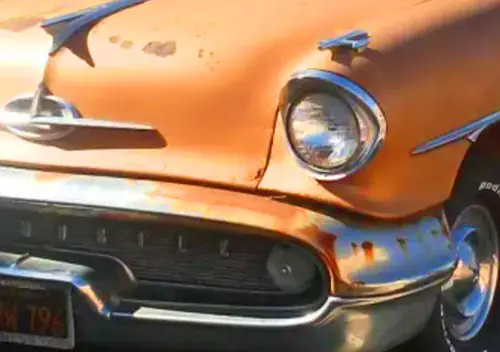
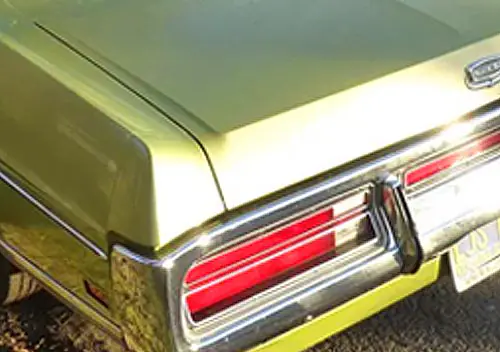
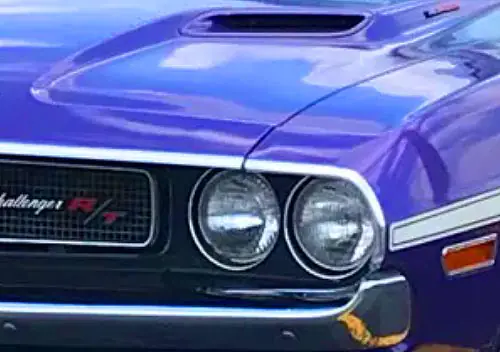


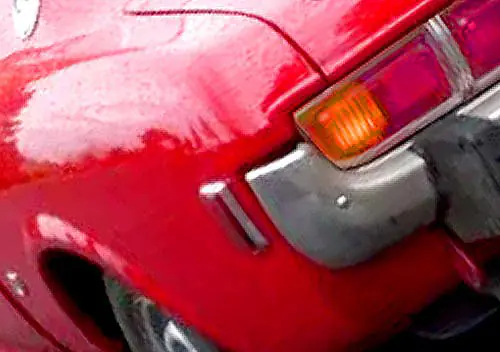

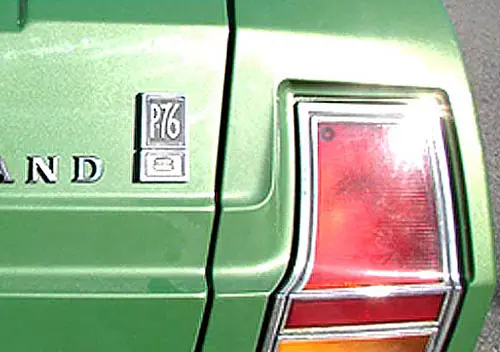
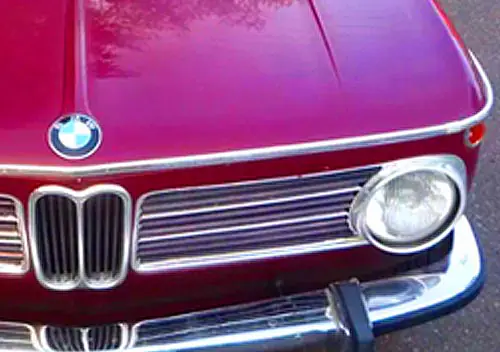

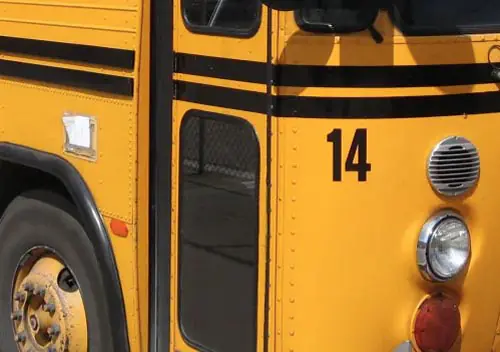
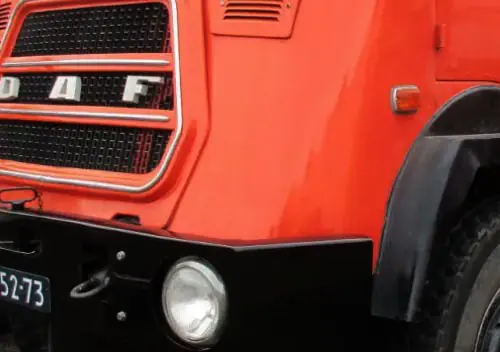
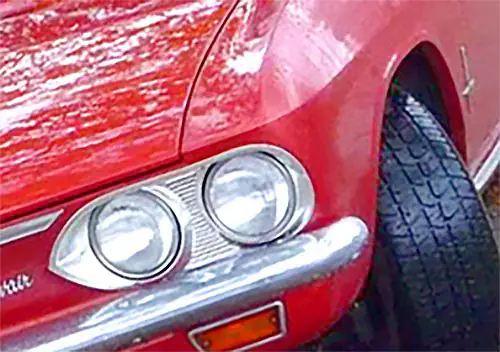
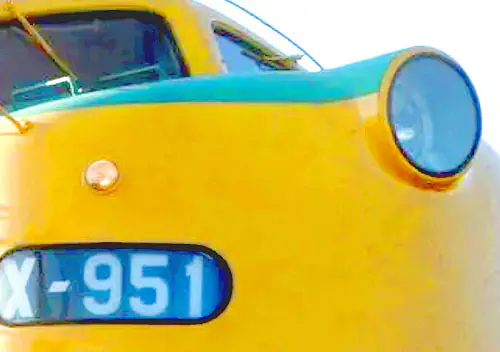
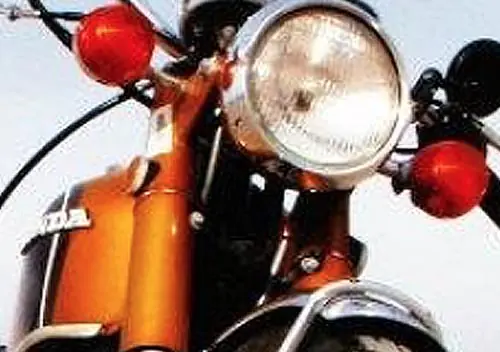
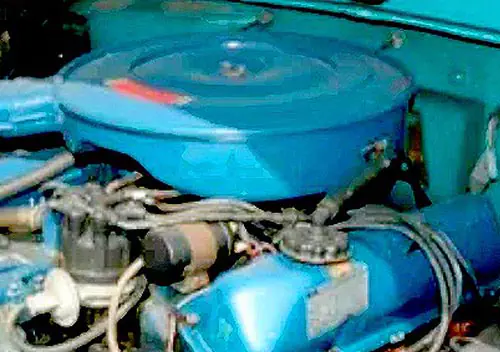
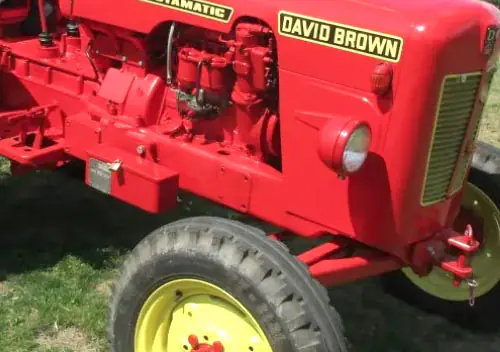
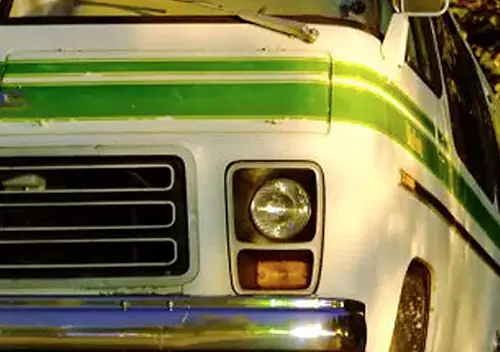

Agree with you completely about the Buick road wheels. I bought a ‘78 Buick Electra, white over baby blue. It had whitewalls & plain wheel covers; it was a great car…but did look a little plain. A guy I worked with had a set of Buick road wheels that he sold me for $50….after a full day of cleaning & polishing them up (good old Turtle Wax Chrome Polish), I had tires switched to them and mounted on the Electra; it truly looked like a different car!
I for some reason have zero recollection of that ’72 hardtop coupe. I didn’t recognize it at all when I saw it here; thought it was a rejected design for a Riviera or something. I very well remember the ’74 and later coupe though. I prefer the styling of the ’76 to the ’72 – the roof and window treatment is very graceful, as are the sweeping fender contours. I much prefer either to the ’77 looks wise, although the latter is much nicer to drive. The ’76 grille is a bit generic but not unattractive; the ’75 Electra is my pick for best ’71-76 front-end appearance. It’s another story inside though – the ’77 interior feels much higher quality and is more attractive and distinctive.
I remember Winter beaters in my youth, mostly late 50’s cars well rusted, nary a one had AC and few had heaters, we just bundled up .
That Buick still looked passable in your prom picture .
I guess many men who weren’t mechanical in nature simply figured they’d ignore their whip and it would tell them when it wanted attention . not a good plan then nor now =8-^ .
-Nate
You’re absolutely right, Nate — the LeSabre was passable, even more than passable, as a prom car. It just had such a hard act to follow as the Riviera’s replacement.
My dad was never good about oil changes, even before I was around (according to my mom) and even when he had a company car and a company-provided Firestone auto center credit card to maintain it.
However, the “Ithaca incident” made an impression on him, and he was never as oblivious to oil levels and oil changes after that, as he’d been before. I really thought we’d cooked that 350 that day.
I’m a fan of your stories. Very real; a bit too much so some of the time. Good to know the old Buick got you through despite it all. Sorry about your prom ride…
Thanks, Paul.
Sometimes, it also seems a bit too real to me when recalling some of our family misadventures (How the hell did we run it so low on oil?) With hindsight, it’s easy to see the Buick’s virtues during a time when we badly needed some virtue.
I had only myself to blame for my prom ride, lol. Some things are just not meant to be.
My cousin was a union representative and he had a 1976 Buick LeSabre Limited in Potomac Blue. I was not a fan of the car (or other Buicks) as it lack the styling of earlier Buicks. He received a new car each year (as they did put a lot of miles on the cars). After a year, he arranged for my uncle to buy the car. He replaced the 1976 for a 1977 Buick LeSabre Limited.
I really enjoy your articles and OMG, I feel so sorry for the young you in the 1980s. I was focused on my career in NYC in the 1980s and not thinking cars.
I had a new 1974 LeSabre convertible, bronze with tan interior. In the early 1970s Dad and I disagreed where I should go to college. I started in architecture, Miami, 1969, but after two years Dad insisted I return to NC. In hindsight, he was paying the bills but no way, no how was I returning to NC after the city lights of Miami. So I stayed in Miami for about another 18 months, starting bartending at a Miami Beach disco club, saved enough money to pay my own way through a few more years of college. Plus, I had a close friend who decided it was time for me to get out of Miami fast due to some issue with a Grand Jury, or take some extra funding and not go swimming with the gators. So I was set financially to go to Richmond and resume my education, without Daddy’s money.
When you are in your 20s, you know everything. I look back all these decades later, and my Dad was a stand up guy. I wanted nothing from Dad at the time, but I was going to be closer to NC moving to Richmond. I guess Dad thought, buy the kid a new reliable car and perhaps he might visit. So during this transition period, a few days stop over in NC Dad said “Lets go for a drive”. Within an hour I had to select a new 1974 Buick off the lot. No clue why Buick as he had never owned a Buick. I selected the 1974 LeSabre only because it was the one convertible on the lot. It did have the sport wheels which I liked. Other than being a convertible, a totally unremarkable car in a color I never would have chosen given more time.
Dad did this fast car purchase three times: 1970 when he wrecked my 1966 T-Bird and I had hours to select a 1970 Nova 396,, 1974 purchase of a Buick convertible hoping I might visit more often moving to collage in VA, and he did it yet again in 1994, when I decided to leave my career in NYC and return full time to university for my graduate degree. A visit to Dad in NC, watching a football game on TV, half-time. “Lets go for a drive”. He bought me another new car within an hour, back home before half-time was over, perhaps thinking I might visit more often with a reliable auto.
Dad and I butted heads for decades, both of us strong willed. My Dad supported me as best he could. At the end, I was bedside with him, and he knew I loved him.
Alfred, thank you for your comments and for sharing some of your family history. Sounds like you’ve had more than a few cars acquired in interesting circumstances. Maybe it’s time for you to join the COAL team.
Fathers and sons often communicate in strange and covert ways. Your father’s “Let’s go for a drive” is one of those, and IMO you correctly received his message and its intent.
In the late 70s my. Mom changed careers in her 50s. She retired from nursing and started selling real estate. She traded in her 74 VW type 1 for a 72 Navy Blue Buick Electra 225..AKA a deuce and a quarter. She needed a 4 door sled for showing houses to potential buyers.
Big block 455? Power everything. Absolutely no annoying “feel of the road”. You could set your drink on the dashboard and eat up speed bumps without slowing down. Cruise control and air conditioner.
I inherited the land yacht and I sold it in 1980 to another Deadhead for $500 and he drove it cross country following the Grateful Dead.. He sold it on the East Coast to another head for the same $500;and he and his crew flew back to Seattle.
These were the big dumb vehicles that were built simply to be transport. They were generally reliable given even the most minimum of care. Even heaped with abuse they still soldiered in. Friends of mine bought a 72 Le Sabre 4-door new. Green and a set of keys. I always wondered why they didn’t save $50 and order a Chevrolet instead. Dependable but dull.
The story about the broken driver-side door reminds me of one my mother tells. Before I was born she had a 1951 Studebaker Champion Starlight Coupe which she used to commute to her job as a school teacher in a neighboring town about 15 miles away from where she and my father lived. When it was being serviced by the local Studebaker dealer they gave her a Lark 4-door sedan as a loaner. It must have been in late 1958 or early 1959.
Neither of the Lark’s front doors worked and she had to enter and exit by using one of the rear doors and then climbing over the bench seat to get in front. Back in those days women did not wear pants, at least not in any kind of a “professional” job such as being a teacher, and she HAD to wear a dress to work. After exiting the car in front of an audience of students, all the little boys pointed and giggled that, “We saw your underwear!”
Fortunately she got her Champion back.
Johnster, the visual I got of those little kids and your mom made me crack up.
These stories hit close to home for me. In 1979, my dad lost his real estate, building and remodeling companies. We left Ohio with 11 brand new, unsold homes he’d built, lost our own home and his office property.
We moved to Florida where he sent back his one year old 1978 Buick Electra and made due with a very worn out 1973 Mercury Montego Villager wagon. I worked and gave them my paycheck which allowed him to buy a decent 1977 Corolla SR5 without A/C.
We did what we had to do. Beaters up north require heat but let me say that no A/C in a dark green car was not fun.
I really enjoy your look back and sharing with us.
Yes, Chip, you and I have walked in the same shoes. And, like you said, “we did what we had to do.”
There’s a Loudon Wainwright III lyric or quote, something about “the good old days are so good because they’re gone.” While I certainly wouldn’t call this period of my life “the good old days,” I do look back while writing these COALs and realize things could have been much worse.
It makes me feel good to hear others enjoy these stories. My uncle told me several years ago that I’ve “turned into a comedian” over the years; I think he’s just an easy audience. But, it’s fun to look back and skewer the difficulty of those times as well as my younger self.
You do have a great way of telling your tales.
I like your caption summary of ’72 v ’76 – it’s spot-on. Typically, a really nice (if slightly comically-sized) ’72 GM transmogrifies into the simultaneously bland and ugly ’76. And boy, did US styling take years and years to recover from these backsliding years.
Looking forward to car 1 next.
Thank you, Justy.
I’ve never been a fan of the “mid-cycle refresh” in general — the car never looks as good as it did originally IMO. I understand the ‘71-‘76 B-bodies were updated to meet evolving impact standards, but the result was aesthetically bleh.
Your essay is wonderful, thanks for the memories. I’m of “that age” where we had beater cars to get thru the awful Detroit winters in the 70s and 80s when I grew up. I remember my older brother, in the mid-80s, drove a ’76 Oldsmobile 98, mileage unknown, total rustbucket, chestnut brown with tan vinyl top and cabin, nicknamed it “Lucifer,” it drank fuel as if gas was free, replete with touchy carburetor, but overall quite dependable — and yes, it too had excellent heat in the wintertime. We couldn’t expect more for the $500 he paid for it. It got us to high school and back, and to work, dates, etc. He had it for two years until it just died one day, towed it away, replaced it with a newer ’82 Honda Accord coupe that he drove until it died at 400k on odometer.
Glad you enjoyed it, Jody.
Your brother’s 98 was the epitome of “winter beater” here in Rochester in the mid-‘80s. At $500 for two years of service, that’s a good value.
And you killed me with the “Lucifer” nickname — I was snort-laughing at that.